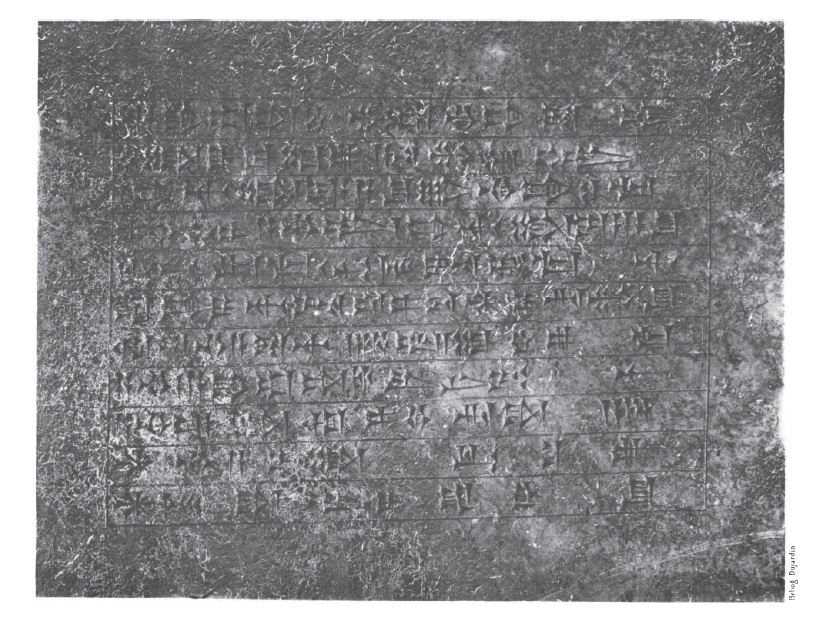Tablet Of Akaptaḫa on:
[Wikipedia]
[Google]
[Amazon]
 The tablet of Akaptaḫa, or Agaptaḫa, is an ancient Mesopotamian private commemorative inscription on stone of the donation of a 10 GUR field (about 200 acres) by Kassite king Kaštiliašu IV (ca. 1232 BC – 1225 BC) to a fugitive leatherworker from Assyrian-occupied Ḫanigalbat in grateful recognition of his services provisioning the
The tablet of Akaptaḫa, or Agaptaḫa, is an ancient Mesopotamian private commemorative inscription on stone of the donation of a 10 GUR field (about 200 acres) by Kassite king Kaštiliašu IV (ca. 1232 BC – 1225 BC) to a fugitive leatherworker from Assyrian-occupied Ḫanigalbat in grateful recognition of his services provisioning the
 The tablet of Akaptaḫa, or Agaptaḫa, is an ancient Mesopotamian private commemorative inscription on stone of the donation of a 10 GUR field (about 200 acres) by Kassite king Kaštiliašu IV (ca. 1232 BC – 1225 BC) to a fugitive leatherworker from Assyrian-occupied Ḫanigalbat in grateful recognition of his services provisioning the
The tablet of Akaptaḫa, or Agaptaḫa, is an ancient Mesopotamian private commemorative inscription on stone of the donation of a 10 GUR field (about 200 acres) by Kassite king Kaštiliašu IV (ca. 1232 BC – 1225 BC) to a fugitive leatherworker from Assyrian-occupied Ḫanigalbat in grateful recognition of his services provisioning the Babylonia
Babylonia (; Akkadian: , ''māt Akkadī'') was an ancient Akkadian-speaking state and cultural area based in the city of Babylon in central-southern Mesopotamia (present-day Iraq and parts of Syria). It emerged as an Amorite-ruled state c. ...
n army with bridles (''pagumu'', a loanword from Hurrian or perhaps Kassite) .
The tablet
The Mitanni kingdom of Ḫanigalbat, here given the Babylonian pronunciation ''Ḫaligalbatû'', had been annexed under the preceding reign of Adad-nārārī I (1307–1275 BC) or Salmānu-ašarēdu I (1274–1245 BC) and Akaptaḫa (a Hurrian name) seems to have been one of the political refugees (''munnabittu'', refugee, displaced person, foreigner) who consequently sought asylum in the Kassite kingdom. He made his home in Padan (var. Padnu), one of the eastern provinces somewhere ( Jebel Hamrin, according to Jensen) in the upper Diyala region which had been claimed by the Kassites since the time of Agum II. The object was recovered during the French excavations atSusa
Susa ( ; Middle elx, 𒀸𒋗𒊺𒂗, translit=Šušen; Middle and Neo- elx, 𒋢𒋢𒌦, translit=Šušun; Neo-Elamite and Achaemenid elx, 𒀸𒋗𒐼𒀭, translit=Šušán; Achaemenid elx, 𒀸𒋗𒐼, translit=Šušá; fa, شوش ...
at the end of the 19th century, where it had been taken as war booty during one of the Elam
Elam (; Linear Elamite: ''hatamti''; Cuneiform Elamite: ; Sumerian: ; Akkadian: ; he, עֵילָם ''ʿēlām''; peo, 𐎢𐎺𐎩 ''hūja'') was an ancient civilization centered in the far west and southwest of modern-day Iran, stretc ...
ite invasions following the overthrow of Kaštiliašu IV by Tukulti-Ninurta I, those of Kidin-Hutran III (ca. 1224 BC and 1217 BC), Shutruk-Nakhunte
Šutruk-Nakhunte was king of Elam from about 1184 to 1155 BC (middle chronology), and the second king of the Shutrukid Dynasty.
Elam amassed an empire that included most of Mesopotamia and western Iran.
Under his command, Elam defeated the ...
(ca. 1158 BC) and Kutir-Nahhunte II (1155 BC).
The tablet describes itself using the same term applied generally to kudurru
A kudurru was a type of stone document used as a boundary stone and as a record of land grants to vassals by the Kassites and later dynasties in ancient Babylonia between the 16th and 7th centuries BC. The original kudurru would typically be stor ...
s as a ''narû'', "stele", and falls into the same tradition of entitlement monuments, excepting the absence of religious iconography and the format of the granting and cursing formulae. The text invokes "the gods of the king", presumably the Kassite deities Šuqamuna and Šumalia. The inscription uses an informal mix of monumental and cursive cuneiform, precedes the royal name with a masculine (1 or m) rather than the divine (DINGIR
''Dingir'' (, usually transliterated DIĜIR, ) is a Sumerian word for "god" or "goddess". Its cuneiform sign is most commonly employed as the determinative for religious names and related concepts, in which case it is not pronounced and is con ...
) or (D) determinative and spells his name with ''-ti-li-'' in place of the more usual ''–til-'', suggesting its provincial origin or perhaps its lack of authenticity.
The name Akaptaḫa appears on four accounts of salaries or ration lists from Nippur
Nippur (Sumerian language, Sumerian: ''Nibru'', often logogram, logographically recorded as , EN.LÍLKI, "Enlil City;"The Cambridge Ancient History: Prolegomena & Prehistory': Vol. 1, Part 1. Accessed 15 Dec 2010. Akkadian language, Akkadian: '' ...
as the father of Ninurta-ašarēdu, dated to the sixteenth year of an unnamed king probably Nazi-Maruttaš (1291 BC), the father of Izkur-Šuqamuna, in the twentieth year of an unnamed king, that of Arunayû the twenty-first year of Kurigalzu II and as DUMU''-Akaptaḫa'' on an inventory of gardening implements from Nazi-Maruttaš’ second year but these incidents are probably for someone else as they appear too early.
References
{{DEFAULTSORT:Tablet of Agaptaha Kassites Kudurru boundary stones Sculpture of the Ancient Near East